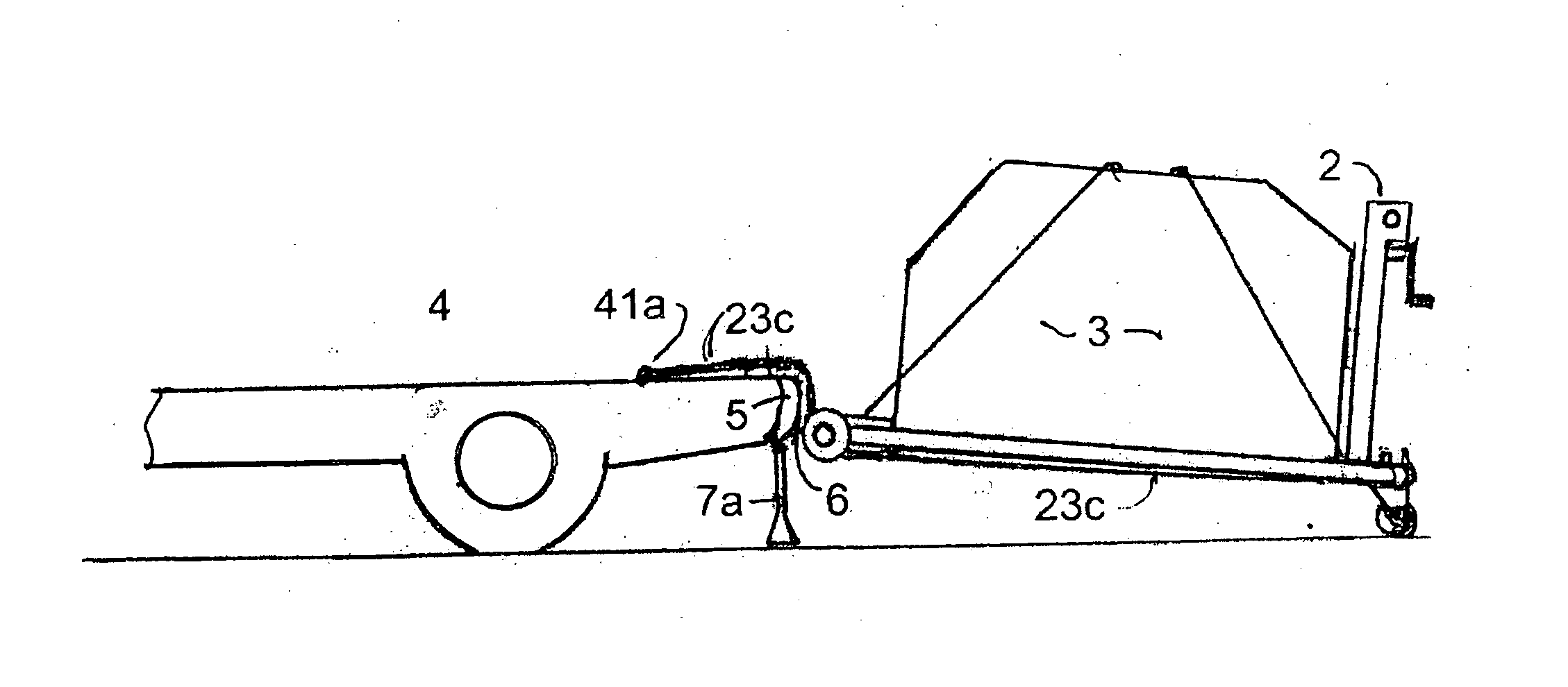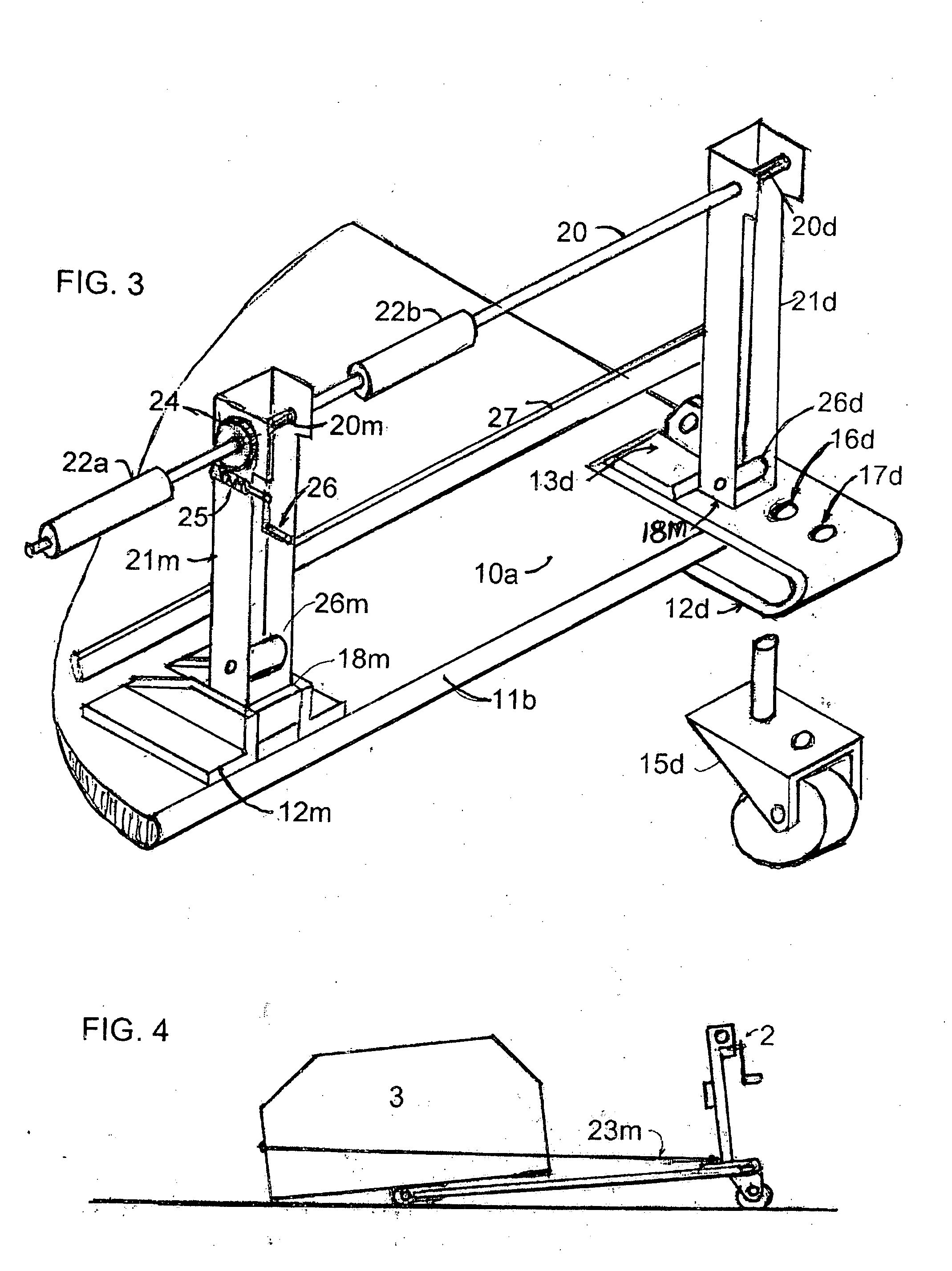Cargo handler for vehicles with rear cargo space
a rear cargo and cargo handler technology, applied in the field of platform trucks, can solve the problems of limited lifting capacity, high cost of buying and maintaining type prior art cargo handlers, and high cost of second type prior art cargo handlers, and design for only limited applications
- Summary
- Abstract
- Description
- Claims
- Application Information
AI Technical Summary
Benefits of technology
Problems solved by technology
Method used
Image
Examples
Embodiment Construction
[0029] In FIG. 1 and details inFIG. 2 and 3, a ¾″ thick rectangular plywood platform 1 has smooth but tough top 10a and bottom 10b surfaces and rounded front end 11a and rear end 11b for easy sliding. Its four corners are re-enforced and covered by 3 / 16″ thick, 4″ wide U-shaped metal plates 12a, 12b, 12c and 12d with cargo holding anchors 13a, 13b, 13c and 13d. The front plates 12a and 12b hold cantilever axles 14a and 14b with retainer-pin holes 19a and 19b (not shown) near the end for removable wheels 15a and 15b. Also the rear plates 12c and 12d have square openings 18c and 18d for holding the outer columns 21c and 21d of three-post winch system 2, holes 16c and 16d for holding the mounting shafts of removable swiveling casters 15c and 15d and holes 17c and 17d for removable pins which hold the casters at their rear most positions for safety while the front end 11a is lifted. Each plate and anchor are attached to the platform with a set of four 5 / 16″ counter sunken flat head scre...
PUM
 Login to View More
Login to View More Abstract
Description
Claims
Application Information
 Login to View More
Login to View More - R&D
- Intellectual Property
- Life Sciences
- Materials
- Tech Scout
- Unparalleled Data Quality
- Higher Quality Content
- 60% Fewer Hallucinations
Browse by: Latest US Patents, China's latest patents, Technical Efficacy Thesaurus, Application Domain, Technology Topic, Popular Technical Reports.
© 2025 PatSnap. All rights reserved.Legal|Privacy policy|Modern Slavery Act Transparency Statement|Sitemap|About US| Contact US: help@patsnap.com



